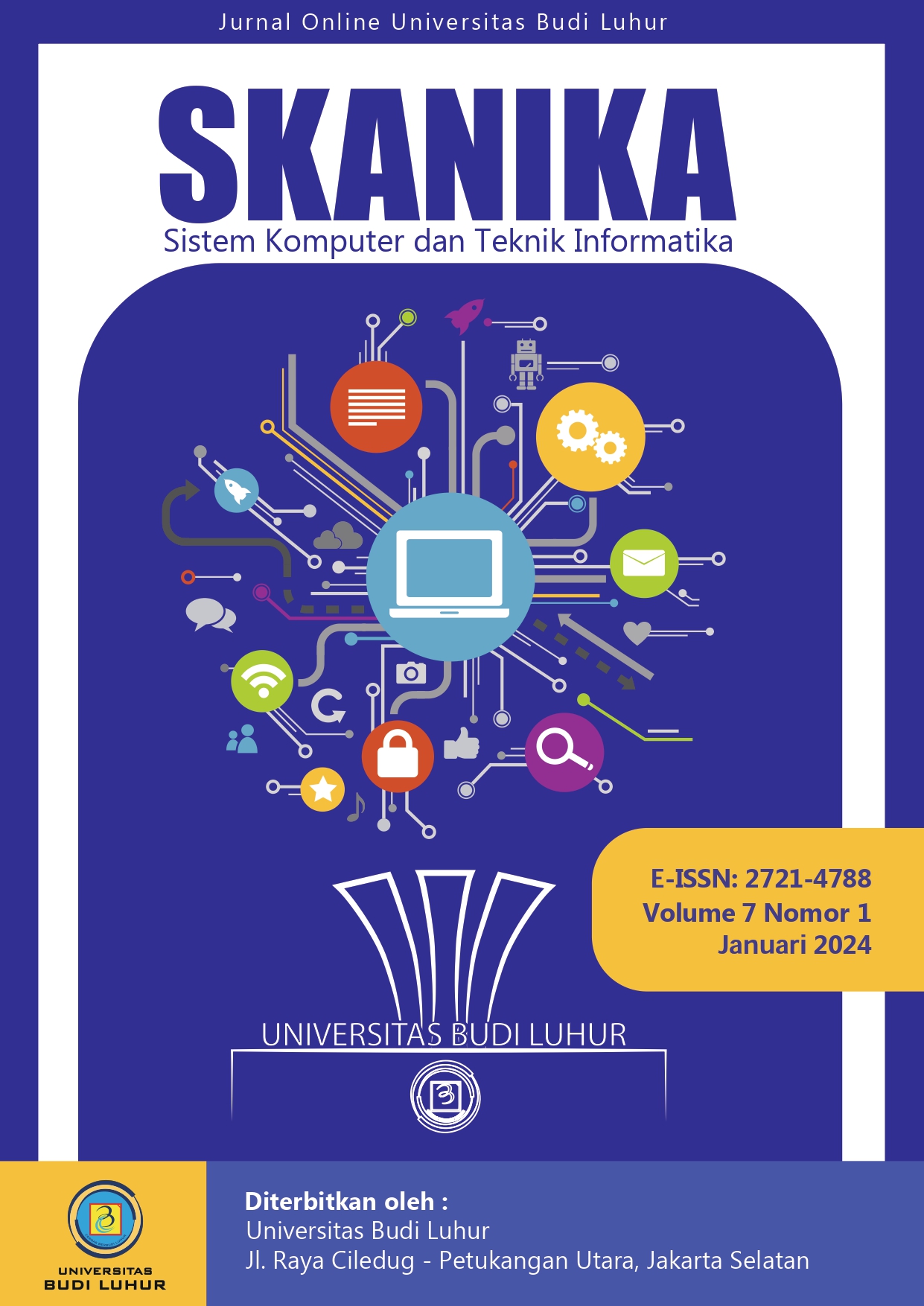RANCANG BANGUN PEMILAH SAMPAH ORGANIK DAN NON ORGANIK BERBASIS MOBILE DI MEDANG LESTARI
DOI:
https://doi.org/10.36080/skanika.v7i1.3147Keywords:
Trash, Ultrasonic sensors, The capacitive proximity sensor, The infrared proximity sensor, MobileAbstract
The trash bins in RT 01/08 currently have only one container, causing organic and non-organic waste to mix. This situation has led to environmental issues in RT 01/08, making the surroundings unpleasant and emitting a strong odour due to the accumulation of mixed waste. The negative impacts of this mixed waste, we can be reduced by separating the trash according to its respective categories when disposing of it. With the advancements in the era of globalization and information technology, especially in the field of microcontrollers and sensors, there have been significant improvements in human life. The emergence of various new technologies can aid human activities and also have a positive impact on environmental cleanliness. The purpose of this research is to develop an automated trash bin that can sort organic and non-organic waste based on mobile technology. By doing so, it can reduce the mixing of different types of waste in the environment, and users can control the opening and closing of the trash bin. The prototyping method tested has proven to work well as desired. This prototyping method involves designing a system and device that can automatically sort different types of waste, producing separate outputs for organic and non-organic waste. Ultrasonic sensors are used to detect the proximity of users, while capacitive and infrared proximity sensors are used to differentiate between organic and non-organic waste. The testing results of the automated trash bin showed that the ultrasonic sensor effectively detects the proximity of users, enabling the trash bin lid to open and close automatically. In distinguishing organic from non-organic waste, the capacitive proximity sensor can detect organic waste such as vegetable scraps, fruit peels, and leaves. Meanwhile, the infrared proximity sensor can detect non- organic waste such as plastic bottles and foot wrappers. However, both proximity sensors experienced a delay in detecting waste, taking approximately 1-3 seconds. Furthermore, the testing results also had a positive impact on the community, raising awareness among people about the importance of disposing of waste according to its respective categories.
Downloads
References
[2] M. Yunus, “Rancang Bangun Prototipe Tempat Sampah Pintar Pemilah Sampah Organik Dan Anorganik Menggunakan Arduino,” Proceeding STIMA, vol. 1, no. 1, pp. 340–343, 2018.
[3] L. Harmaji and Khairullah, “Rancang Bangun Tempat Pemilah Sampah Logam dan non logam otomatis berbasis mikrokontroler,” Progresif: Jurnal Ilmu Komputer, vol. 15, no. 2, pp. 73–82, 2019.
[4] O. Puadi and H. Hambali, “Perancangan Alat Pemilah Sampah Otomatis,” JTEIN J. Teknik Elektro Indones., vol. 3, no. 1, pp. 1–14, 2022.
[5] M. Anas, N. Hikmah, and I. Aprilia, “Smart Trash Klasifikasi Sampah Otomatis Dengan Sensor Proximity Berbasis Arduino,” Jurnal FORTECH, vol. 3, no. 2, pp. 64–72, 2023.
[6] M. Iqbal Ardimansyah and R. Muhammad, “Rancang Bangun Prototipe Klasifikasi Sampah Otomatis Dengan Sensor Proximity dan Linear Rail Slider Box Berbasis Mikrokontroler Arduino Di Lingkungan UPI Kampus Cibiru,” Jurnal of Software Engineering Information and Communication Technology, vol. 1, no. 1, pp. 33–38, 2020.
[7] S. Herliza and Almasri, “Rancang Bangun Tempat Sampah Pintar sebagai Media Pembelajaran Sekolah,” Jurnal Pendidikan Tambusai, vol. 6, no. 1, pp. 2984–2995, 2022.
[8] M. N. Havid, S. Wibisono, “Rancang Bangun Alat Pemilah Sampah Berdasarkan Jenis Organik dan Anorganik,” Joutica: Journal of Informatic, vol. 3, no. 1, pp. 18–25, 2021.
[9] B. A. Ramadhan, I. Rizianiza, and F. Manta, “Rancang Bangun Tempat Sampah Pemilah Otomatis Berbasis Arduino,” Jurnal Rekayasa Mesin, vol. 17, no. 2, p. 265, 2022.
[10] F. Puspitasari, et al, “Sensor Ultrasonik HCSR04 Berbasis Arduino Due Untuk Sistem Monitoring Ketinggian,” Jurnal Fisika dan Aplikasinya, vol. 15, no. 2, p. 36, 2019.
[11] R. Rinaldy, R. F. Christianti, and D. Supriyadi, “Pengendalian Motor Servo Yang Terintegrasi Dengan Webcam Berbasis Internet dan Arduino,” Jurnal Infotel, vol. 5, no. 2, pp. 17–23, 2014.
[12] R. G, Guntara, and R. A. Famytra, “Pembangunan Aplikasi Panduan Memasak Menggunakan Sensor Proximity Sebagai Fitur Air Gesture Pada Platform Android,” Jurnal Ilmiah Komputer dan Informatika (KOMPUTA), vol.1, no. 1, pp. 1-7, 2017.













